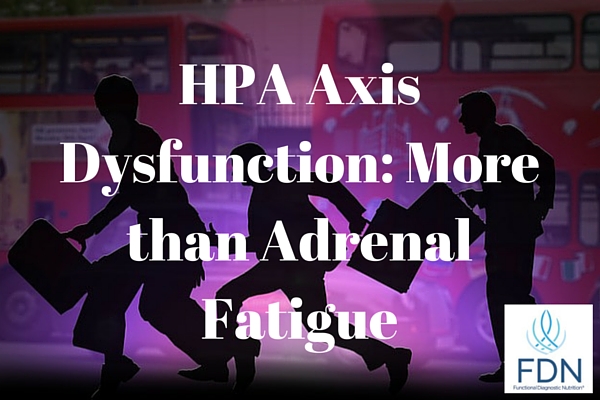For most people, life is busy. In fact it is often too busy for many. At work and at home, people find themselves dealing with seemingly endless obligations, projects, tasks and chores that all need attention. They are subjected to frequent stimulation from smart phones, tablets, laptops, mp3 players and televisions which cause overload. There are hundreds of things demanding time and attention which leads to plenty of daily stress. And each time stress occurs, whether is it physical, emotional or chemical or whether the threat is real or imagined, it causes the HPA Axis to spring into action.
What is the HPA Axis?
The HPA Axis is part of the endocrine system and consists of the hypothalamus, the pituitary gland and the adrenal glands. It is this axis that creates the stress response in the body, when you encounter any type of stress in your daily life, no matter how big or small.
When you face stress, the hypothalamus releases a hormone known as Corticotropin Releasing Hormone (CRH). The release of CRH sends a signal to the pituitary gland to release another hormone known as Adrenocorticotropic Hormone (ACTH). Once released, this hormone travels through the bloodstream, down to the adrenal glands where it triggers the release of the steroid hormone Cortisol.
Once released into the body, Cortisol prepares it to either run or fight by flooding it with glucose as a means of creating a burst of energy that would allow the body to face the potential threat. Along with increasing energy, Cortisol also suppresses the digestive system, the production of insulin, immune system responses and the reproductive system during times of stress, so that all energy can be directed to either fleeing or fighting.
The feedback loop
The HPA Axis functions as a feedback loop, which occurs when the output of one of the glands loops around and becomes input. With the HPA axis, this occurs when receptors in the hypothalamus and pituitary receive signals from the adrenals that high levels of cortisol have been produced. This then triggers the hypothalamus and pituitary to stop production of CRH and ACTH, which then signals the adrenals to reduce production of Cortisol. Once Cortisol levels begin to decrease, the stress response stops, the body calms down and hormone levels to return to normal. This is a negative feedback loop that is well functioning in healthy individuals.
Dysfunction occurs however, as the result of chronic stress. When chronic stress occurs in an individual, the HPA axis continues to release hormones on an accelerated basis. But after time, the overproduction of these hormones leaves the glands of the HPA axis desensitized and they stop recognizing signals to stop producing hormones. The negative feedback loop is no longer functioning as it should and HPA axis dysfunction becomes the norm.
The idea of adrenal fatigue has become popular in natural and alternative health world in recent years. But while many alternative practitioners are focusing on the adrenal glands being fatigued as a result of chronic stress, that is only one part of the equation. It is actually the dysfunction of the entire HPA axis that is creating the symptoms, not simply a dysfunction in the adrenal glands alone. It is the dysfunction of the feedback loop of the HPA axis that ultimately creates the symptoms that people now associate with adrenal fatigue.
So how does this affect your health?
There are many symptoms that accompany HPA axis dysfunction. These are some of the most common complaints that people deal with.
- Sleep problems
- Thyroid dysfunction
- Blood pressure problems
- Lowered immune system
- Blood sugar problems
- Increase in abdominal fat
- Brain fog
- Fatigue, particularly during the morning and mid-afternoon
- Inflammation
- Slow wound healing
- Cravings for salt or salty foods
- Dizziness
- Dry skin
- Low libido
- Poor muscle tone
- Poor circulation
- Anxiety
- Depression
These symptoms can get worse over time if left unchecked. If you are struggling with these issues, it is vital that you contact an FDN Practitioner. FDN Practitioners use functional lab testing to see where dysfunction is happening in the body and can test you to see if hormone levels indicate HPA axis dysfunction. Your FDN practitioner can then help you to create a full health protocol, which will look at diet, regular stress management, proper sleep, exercise and proper supplementation. This protocol will help to restore balance in your body and reverse the negative effects of HPA axis dysfunction.
You no longer have to struggle, spending hours searching for solutions to your symptoms. Contact an FDN Practitioner today!







